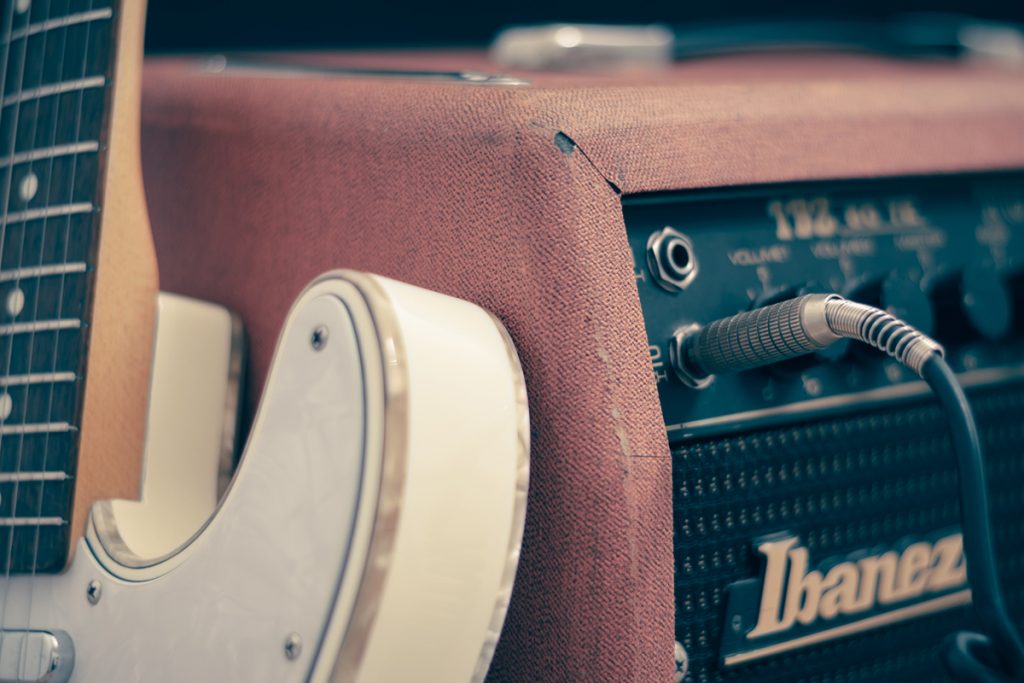In these free country soloing guitar lessons, Jason Loughlin will take you through two different styles of soloing within the subgenres of country guitar. First, he’ll show you a shuffle in C that takes influence from pedal steel players, and then he’ll break down a country-fried blues shuffle that is indicative of the country rock genre.
With each of these studies, you’ll get tab, notation, and jam tracks to work with while you broaden your country soloing guitar skills. And, if these two studies get you up and running, make sure to check out the full course on TrueFire!
Country Shuffle Solo: Overview
Shuffles are the music of the honky tonks. Buck Owens and The Buckaroos were the kings of the country shuffle, with walking bass lines and shuffling drums with guitars playing with strong accents on the upbeats.
I steal a lot from pedal steel players when playing shuffles – this study will use steel bends, contrary motion licks, staccato arpeggios, and blues licks in the study all come from steel players. As a soloist, using substitutions in shuffles sounds great. The most common ones are secondary IV’s and a raised diminished iv. Altering any dominant chords is acceptable, too. For instance, using an augmented I chord to get to the IV or using a V7b9 to get the I chord are common. This study is in C and is on the up-tempo side of shuffles.
Country Shuffle Solo: Performance
Download the tab, notation, and jam track for this country soloing lesson on TrueFire.
This is an upbeat country shuffle in C. Usually shuffles are a little slower than this, but this tempo is still danceable, which is the point of country shuffles. They are used primarily in dance music. The progression is a simple I-IV-V.
Country Shuffle Solo: Breakdown
The solo kicks off with a typical steel guitar pickup that pedals off of the low G. I establish a motif that always ends with a diatonic step from above approach to the chord tone. Then, I use my C augmented 7th arpeggio to set up the IV chord. To lead the IV into the V, I arpeggiate the F triad and chromatically walk it into G. Over the G chord, I can use a V chord sub, which is D7. So, I’m going to sub in a D7 over the G and resolve back to G.
For the next chorus, I start with another classic steel pickup. This time it’s a contrary motion lick. I have two voices moving in opposite directions. Next, I use double stops and bring out the bouncy rhythm associated with shuffles. When I get to my IV chord, I use the IV sub. My IV is F, so I have to think what is the IV chord of F. It’s Bb major. So, on the downbeat of the F chord, I play a Bb major triad and resolve to an F major triad. Then, I use an F# diminished triad to imply an altered D7 leading into G. When I get to the G chord, I use a classic arpeggio pattern with an approach note and end with a bluesy guitar lick over the I chord.
Country Rock Solo: Overview
The country rock guitar sound can be thought of as countrify-ing a blues shuffle, usually played faster than a blues shuffle and incorporates double stops, hybrid picking, and syncopation. Technically, this is similar to a two beat where you can use open string licks, double stops, bends, chicken picking, banjo rolls, though if you start altering chords or adding a bunch of substitutions it begins to sound a little heavy handed. In this guitar lesson, I’m using triplet pull-offs, bends, approach bends to the interval of the 6th, double stops, open string licks, and the blues scale.
Country Rock Solo: Performance
Download the tab, notation, and jam track for this country soloing lesson on TrueFire.
This guitar lesson is using a track in A that basically follows an A blues progression. The turnaround is V to IV with a hold on the IV.
Country Rock Solo: Breakdown
I start the solo with a unison bend into C# over the A chord. The rest of the phrase uses the A major pentatonic with b3 and b7 passing tones. This leads into a banjo roll through A triad inversions and tone clusters into bending 6ths up the neck to set up the D chord. Over the D chord, I descend using double stops into a cascading D lick. Then I jump up the neck to the b7 of A into a bluesy lick that takes us all the way down to the low E. Next, we chicken pick the interval of a 6th down an E Mixolydian scale. For our hold over the D chord, I’m using a double stop lick that has a dissonance between the 6th and b7th. To wrap up the solo, I play some double stops over A. The most notable is the half-step approaches into the tritone interval made by playing the 3rd and b7 together.
Jason Loughlin’s Essentials: Country Soloing Styles has 9 more studies to dive into, all taken from different subgenres of country guitar: Western, bluegrass, rockabilly, outlaw country, Tex Mex, and more! Check it out now!
